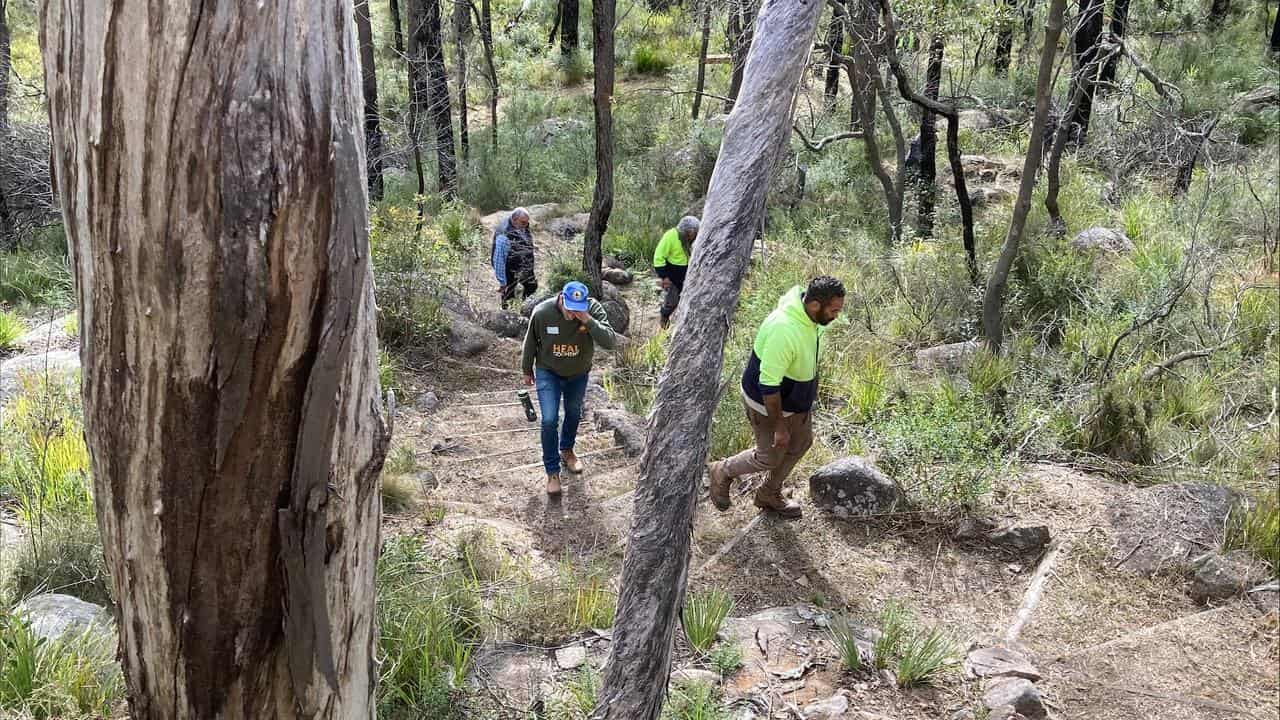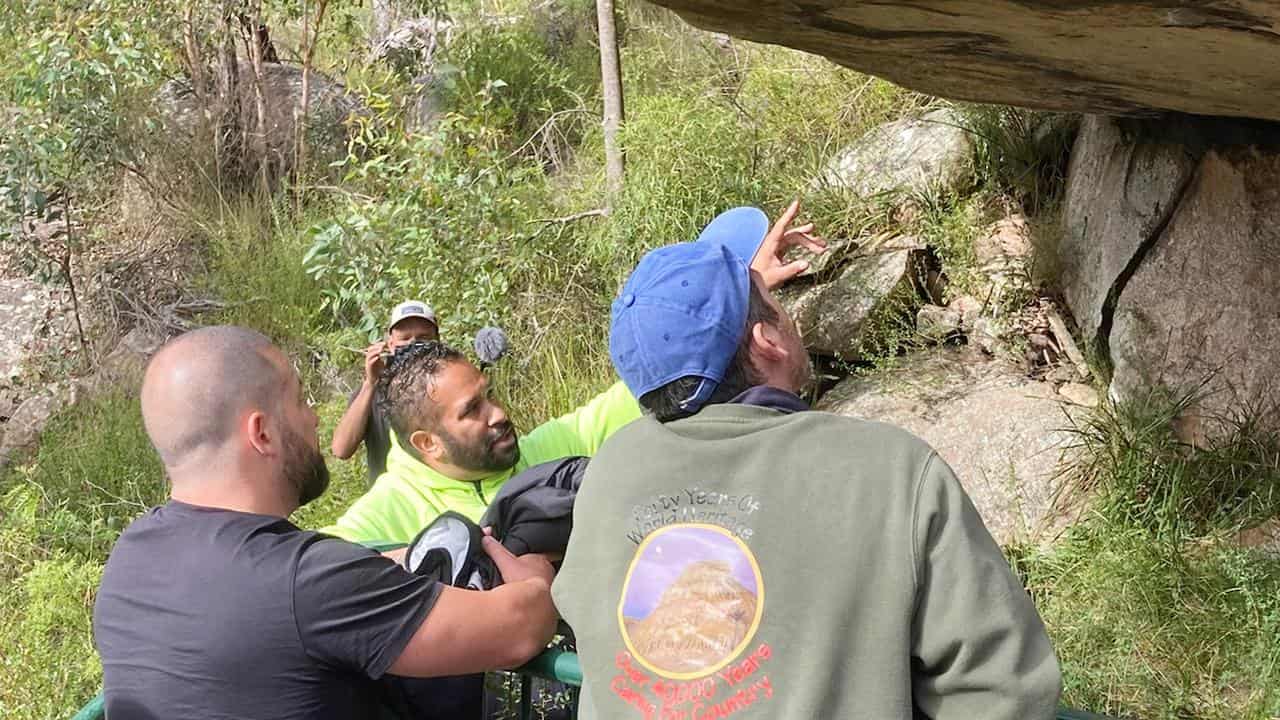
While nature doesn't recognise state borders, when a serious bushfire crossed from the Northern Territory into Queensland, it stopped.
The September fire tore through more than 1.6 million hectares before reaching Boodjamulla National Park, where it met strategically-managed spinifex fuels and burn scars.
With no more continuous fuel to consume, the fire broke into smaller fragmented fronts and eventually went out of its own accord – impacting only about 3800 hectares within the park.

The fire scars were the result of 12 years of intensive and strategic annual landscape burning by Waanyi traditional owners and the Queensland Parks and Wildlife Service.
They serve as one example of how Aboriginal land management techniques help country.
After the 2019/20 fires, which damaged 5.5 million hectares across NSW, the Banbai Rangers conducted an investigation into the impact of cultural burning.
Since reclaiming their land in 1997, members of the Banbai Aboriginal Nation resumed their traditional role caring for country as a way to reconcile and reconnect after decades of being excluded.
The Banbai Aboriginal Nation's country is in the NSW Northern Tablelands alongside the catchment area of the Boyd and Mitchell river systems.
The rangers manage more than 1500 hectares in the Indigenous Protected Areas of Wattleridge and Tarriwa Kurrukun.
Banbai elder Lesley Patterson knows all too well the impact dispossession of land has had - not only on her people, but also on her country.
Caring for country has supported the health of waterways and managed the growth and revegetation of plants.
But prolonged periods with limited Aboriginal land management on Banbai country, coupled with climate change, has resulted in extreme impacts on the environment, including drought and bushfires.
"My ancestors’ knowledge was passed down and relied upon for generations but, when non-First Nations people arrived, we were not able to continue our practice," Aunty Lesley said.
"That’s why a lot of country is sick - it didn’t get that healing part of it for a long period of time."
The Banbai have the opportunity to protect country and re-establish cultural practices, passing on knowledge to younger generations so it can be shared for years to come.
"Caring for country is a way to ensure our future generations know where they belong, and that this country is theirs and their responsibility to manage and heal," Aunty Lesley said.
"This is about Aboriginal people getting back land, looking after land, and having that connection to country.
The Banbai also want to create a model for others to use.
"Our country isn’t dead, it’s just been sleeping, it needs us to reawaken it," Aunty Lesley said.

The benefits of empowering Aboriginal land management were brought to light after the devastating Black Summer bushfires.
The Banbai Rangers and NSW government partnered in 2020 to develop a report that assessed the impact of fires on land encompassed by the Banbai Nation.
The report analysed the impact of bushfires on land cared for by the Banbai Rangers, compared to other public and private land.
Ranger Kane Patterson said there was a significant contrast in how the fires impacted land managed by the Banbai Rangers.
In the Indigenous Protected Areas, cultural values were known and actively managed, which meant reduced fuel loads and protection of important cultural sites like the Kukra Rock Shelter.
The report also found cultural burning promoted regeneration and did not harm the canopy.
The outcomes of the report presented an opportunity for collaboration and integration of traditional practices into modern land management.
The key recommendation was for the Banbai Rangers to lead the development of a Whole of Country Planning Pilot, to increase engagement while mentoring others and learning from the country itself.
Senior ranger Tremane Patterson explained these were the practices that kept country thriving for more than 65,000 years.
"As rangers, part of caring after country is caring for cultural sites, artefacts and stories through cultural burning practices, song and dance," he said.
"Bringing all that culture back and passing it down to our younger generations is what is important."
In Boodjamulla, parks officers embraced Waanyi traditional owners' knowledge and changed the way they managed the land, following devastating bushfires that ravaged the gorge every five years or so.
Each year, rangers conduct early season landscape-scale aerial burns within the national park, strategically burning to create a pattern of burnt and unburnt areas and a diverse range of spinifex ages.
This reduces the scale of bushfires while promoting ecological resilience and diversity.
Fire scar mapping and analysis has shown the mosaic burn pattern created over the past five years significantly helped to reduce the impact of blazes.
Impacts of ecologically-destructive bushfires are reduced on the national park and its unique cultural and natural values, including the Riversleigh World Heritage site and habitat for the endangered Carpentarian grasswren.
Queensland Parks and Wildlife Services ranger Lea Ezzy said Boodjamulla saw both floods and fires in 2023.
"We are still working to recover the park from the severe floods that impacted Lawn Hill Gorge in March 2023 and have thankfully been successful in preventing further damage more recently from the fires," she said.
"Thanks to our enhanced and strategic fire management approach, only a tiny portion of the park was burned.
"Our mitigation work also protected those around us by stopping the fire from entering neighbouring properties, showing just how important our year-round planned burn operations really are."









